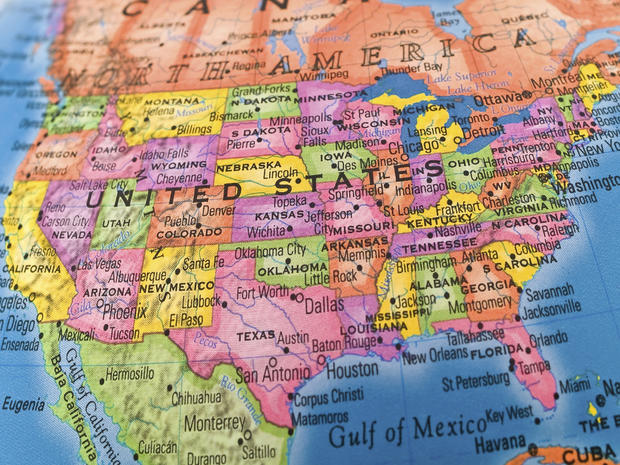America's incredible shrinking middle class
If the middle-class is the economic backbone of America, then the country is developing osteoporosis.
Each of the 50 states has seen its share of middle-class families shrink from 2000 to 2013, thanks to stagnant incomes and rising housing costs, according to an analysis from the Pew Charitable Trusts. In the hardest-hit states, such as Wisconsin and Ohio, the share of middle class families has dropped by more than 5 percentage points, shifting the percentage of middle-income families to below half of the state's population.
The eroding middle class poses a serious challenge to the nation's economic growth, given that households with mid-range incomes fuel spending on everything from cars to housing. Yet during the past 15 years, more of those middle-income families have slipped out of the sweet spot of the American economy, thanks to a confluence of negative trends such as declining or stagnant wages and a growing income gap. While mid-income families are suffering, in many states the top 1 percent of income earners have captured all of the income gains since the Great Recession officially ended in June 2009.
"That the people in the middle class are a shrinking portion of the population in all likelihood will have far reaching societal impacts," said Scott Greenberger, the editor of Pew's Stateline unit, which analyzed the state-by-state trends. "There is something to be said for political and economic stability" with a stable or growing middle class, he added.
Of course, not everyone agrees on what constitutes the middle class, and a middle-class lifestyle can vary depending on the cost of living for a particular city or state. A middle-of-the-pack family in San Francisco, for instance, may need income of well over $100,000 to afford housing and food, simply because of the higher cost of living there. A family in Nebraska, though, may count as middle-class with an income as low as $39,000.
State-by-state variance was taken into account by Pew's analysis, which considered households making between 67 percent and double that of each state's median income as "middle class." On an inflation-adjusted basis, median incomes in states including California and New York have actually declined during the past 15 years, the analysis found. The trend means that more households are struggling to manage their day-to-day costs.
"In most states, the growing percentage of households paying 30 percent (the federal standard for housing affordability) or more of their income on housing illustrates that it is increasingly difficult for many American families to make ends meet," Pew noted.
That the middle-class has lost families in every state was surprising to Pew, Greenberger said. "We certainly were aware of the travails of the middle class and the fact that more and more people were no longer in that middle of the income distribution, but we didn't know it would be in all 50 states," he noted. To be sure, the study doesn't include data from 2014 and 2015, so recent economic gains aren't reflected in the research, he added.
California is one state where residents are increasingly challenged by those trends. The median annual income in the state has slipped to $60,190, down from an inflation-adjusted $65,445 in 2000, according to Pew. At the same time, housing prices have surged, pushing up the ranks of people struggling to afford rent or mortgage payments. About 44 percent of Californians now pay more than 30 percent of their income on housing, up from 38 percent in 2000, Pew noted. The state's share of middle-class families has declined 3.2 percentage points to 43.5 percent.
The downside to that type of confluence -- lower wages, higher housing costs -- could be potentially disastrous, leading to lower economic growth and a disincentive for people to move to the state, according to a report from California's Legislative Analyst's Office.
Americans across the country are feeling the stressof lower or stagnant income and rising costs of living, with Pew reporting in January that seven out of 10 Americans are strained by financial issues ranging from crushing debt loads, insufficient savings or income that's too low to cover their expenses.
